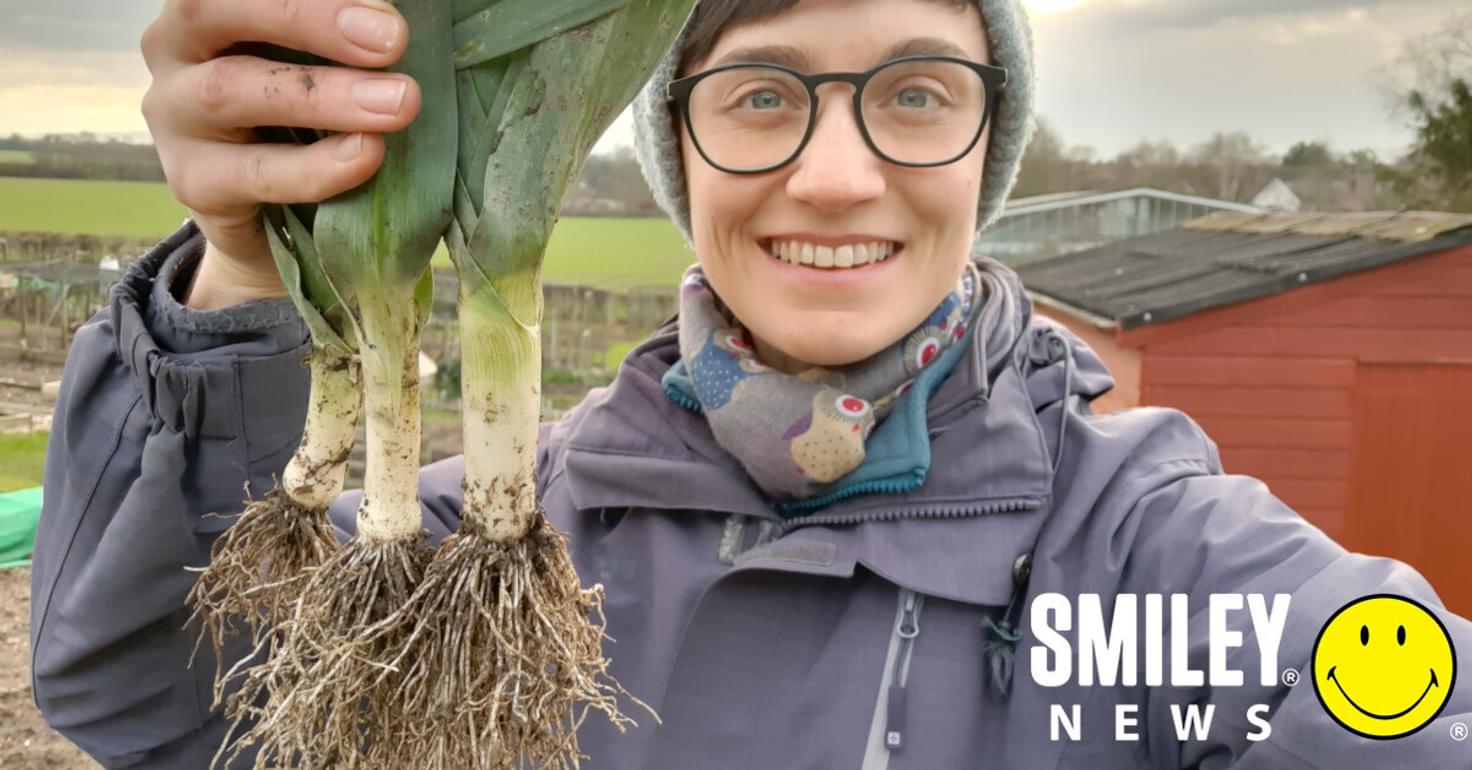
Words by Smiley Team
There are lots of ways you can do your bit to reduce your impact on the environment – but one you may not have heard of is “compleating”.
Compleating means eating all edible parts of fruits, vegetables and herbs – including things like peelings, cores, seeds, leafy tops and the parts we might not realise are tasty and nutritious.
It’s a concept Ellen Tout, 31, from Kent became fascinated with when she found out about it on the Love Food Hate Waste website – so much so, she wrote a book on it.
Ellen is a sustainability writer and author of The Complete Book of Vegan Compleating: An A–Z of Zero-Waste Eating For the Mindful Vegan.
“After finding out about the concept, I started applying this principle to all of my cooking and searched everywhere for a book, so that I could learn more,” she tells Smiley News. “I realised most books about food waste include meat and dairy, and this inspired me to write The Complete Book of Vegan Compleating.
“As a vegan, I wanted to show people how they can make the most from plant-based ingredients and the amazing different recipes you can create by compleating.”
Food waste is responsible for 8-10% of all global greenhouse gas emissions, explains Ellen.
“That's roughly the same as the aviation industry globally,” she continues. “Whilst we hear lots about topics like fuel, aviation and electric cars, I think that food waste is too often overlooked.
“Food can be a creative and fun way to make a difference to the climate crisis. It's something we can all start to change from our homes. Reducing food waste also saves you money and introduces new and nutritious parts of fruits and vegetables into your diet. Whereas the climate crisis can often feel overwhelming, compleating is a tangible step we can all take and is empowering.”
So, how do we get started?
First, it’s worth learning about things you can “compleat” that you might not realise. “Onion and garlic skins are actually edible and have been found to have antioxidant properties,” says Ellen. “They can be added to stocks or blended into a powder to add to dishes.
“One of my favourite recipes is an onion skin infused focaccia bread, topped with caramelised onions. People are often also surprised that you can compleat kiwis and bananas – skin and all! I like making a roasted whole kiwi salsa and using banana peels to marinade and pull, a bit like jackfruit or pulled pork.”
“Rethink your ingredients a little,” says Ellen. “Rather than throwing parts away, question why we don't use those bits.
“Often, the parts we throw away are edible and full of goodness. A really simple step is to stop peeling root vegetables. There's no need, just give them a scrub. The skin is where lots of the fibre and nutrients are.
“Homemade stock from veggie scraps is also a really easy way to reduce your food waste and make the most of your ingredients. I store all the scraps in a freezer bag and make a batch once a month, so it's something that fits easily around a busy schedule.”
Reduce food waste even further by using food waste apps OLIO and Too Good To Go. “They both enable you to rescue unwanted or surplus food from local people and businesses,” adds Ellen. “And Wonky veg schemes like Oddbox are also brilliant. My book also includes advice about the best way to store and preserve food, so that it lasts as long as possible.”
Homemade veggie offcuts stock:
"The simplest way to use up your onion and garlic skins is a homemade stock, perfect for cooking things like soups and stews. Store your onion and garlic skins in a tub in the freezer with other vegetable offcuts. Once you have enough to fill a large saucepan, empty the contents into the pan and pour in enough water to fill it. Cover with a lid, bring to the boil and simmer for 40 minutes to create an aromatic broth full of goodness. Remove from the heat and carefully strain the stock into heatproof containers. The vegetables can now be composted, and the cooled stock can be stored in the fridge for around a week."
Veggie peel crisps:
"Most root vegetables don’t need peeling, just a good scrub. If you do peel your veg or squash, then make yourself some tasty peel crisps. Toss the peelings in a little oil and season with salt, pepper and optional garlic powder. Spread evenly on a tray and bake at 180°C for 10 minutes until crispy. You can follow these same steps to make roasted seeds from a squash or pumpkin."
Carrot top pesto:
"In a food processor, blitz 70g carrot tops with 10g fresh basil, one chopped garlic clove (add the skin too), three tablespoons chopped walnuts, two tablespoons lemon juice, three tablespoons nutritional yeast, ¼ teaspoon salt, three tablespoons olive oil and one tablespoon water. Blend well and enjoy."
Ellen Tout is the author of The Complete Book of Vegan Compleating. For more, see ellentout.com and follow @compleatly_vegan on Instagram.